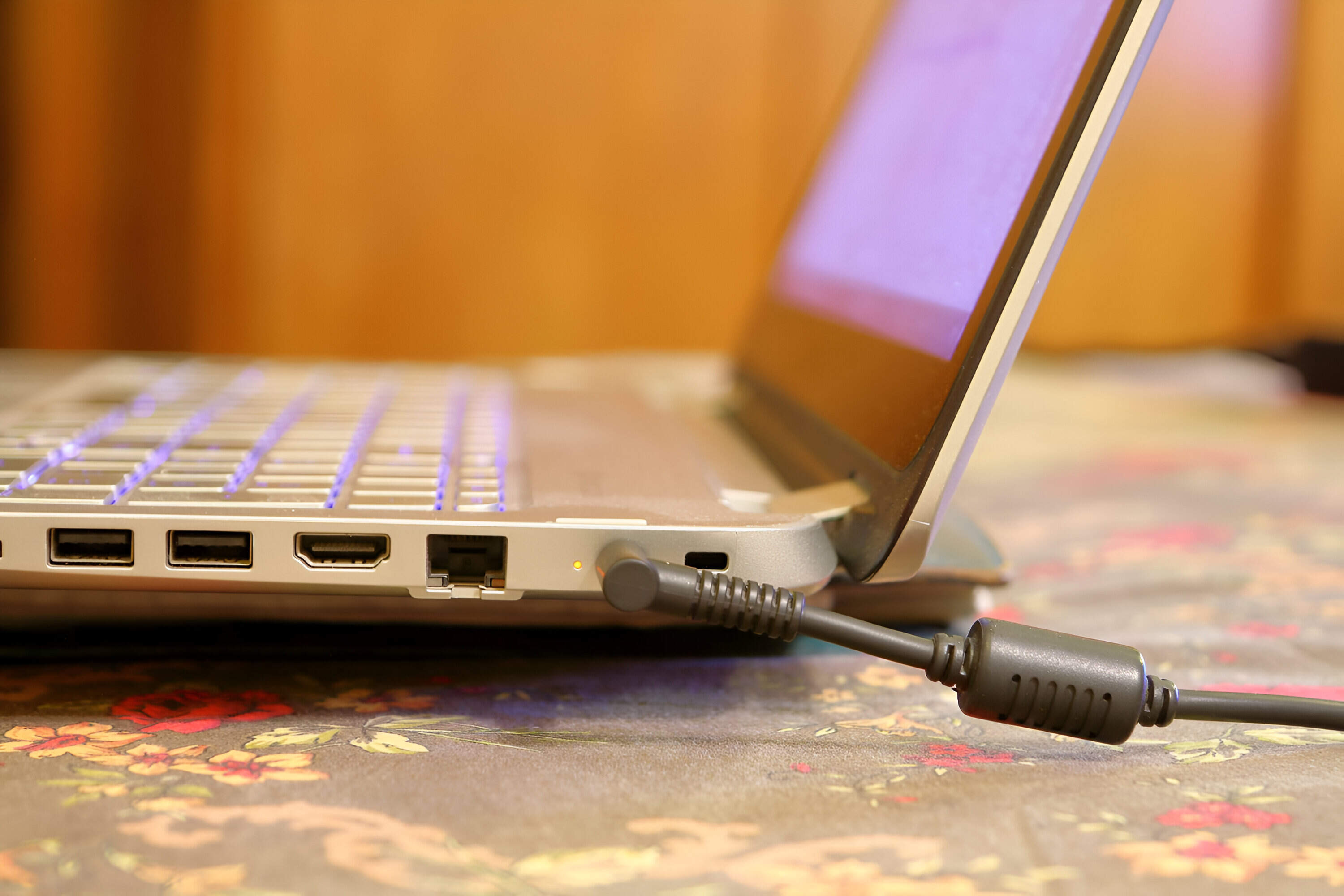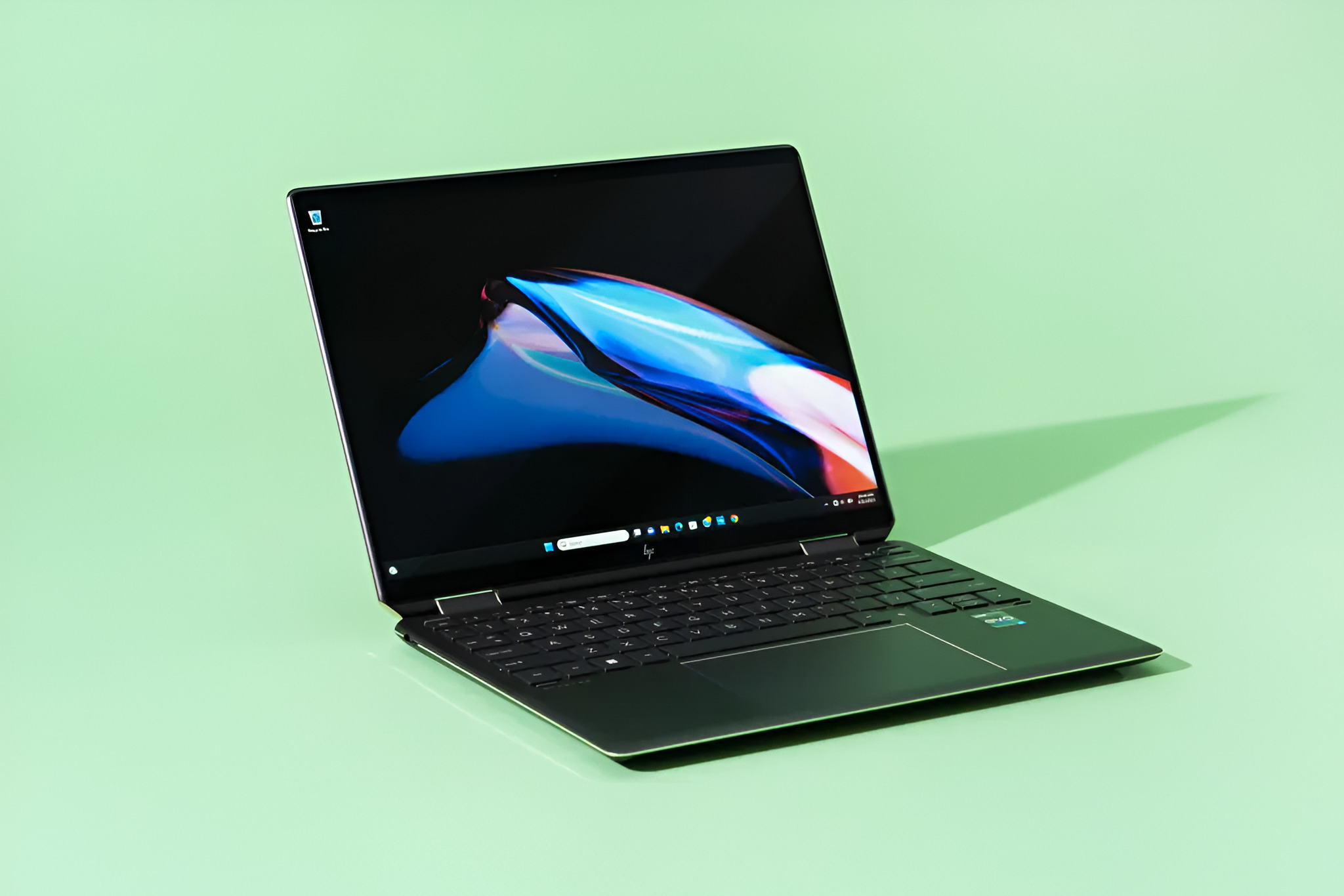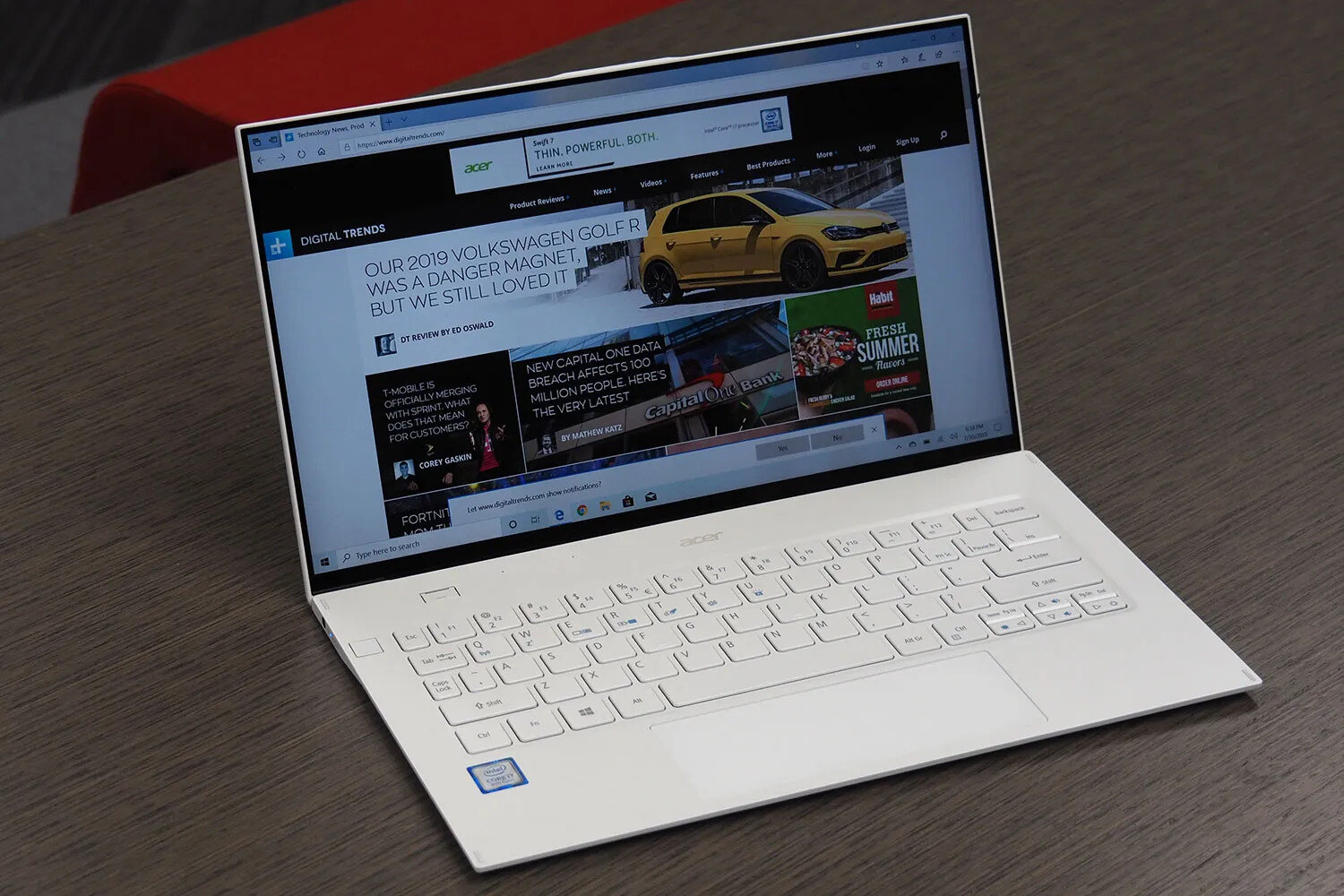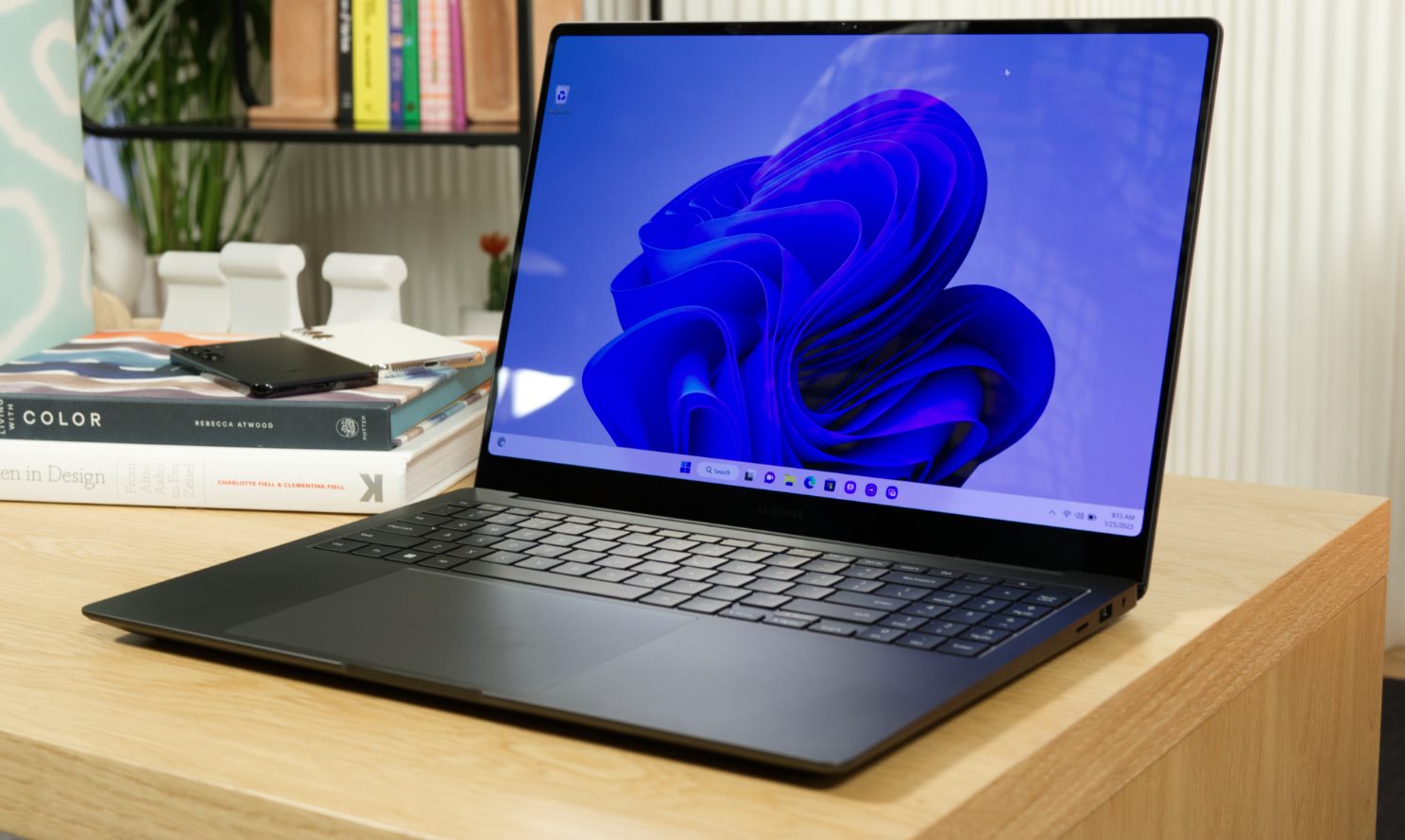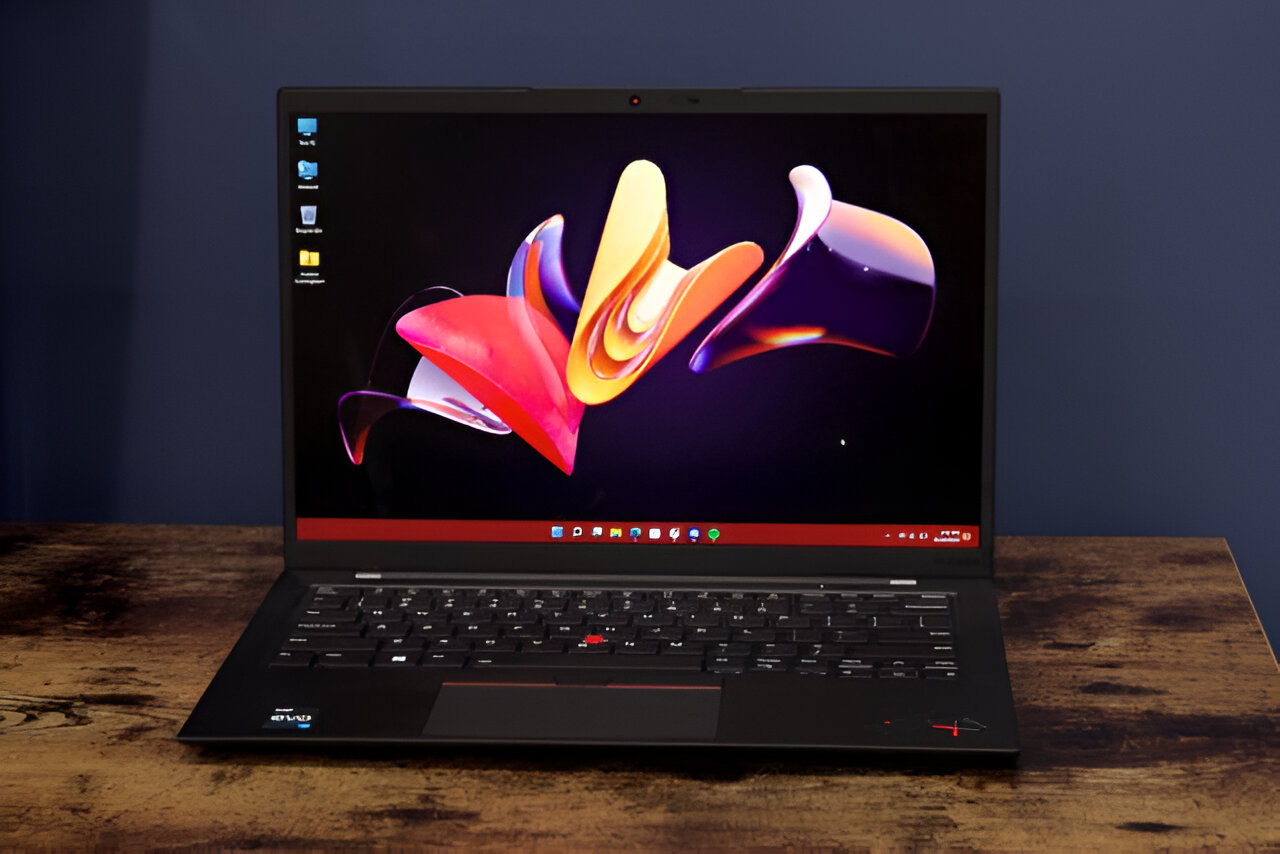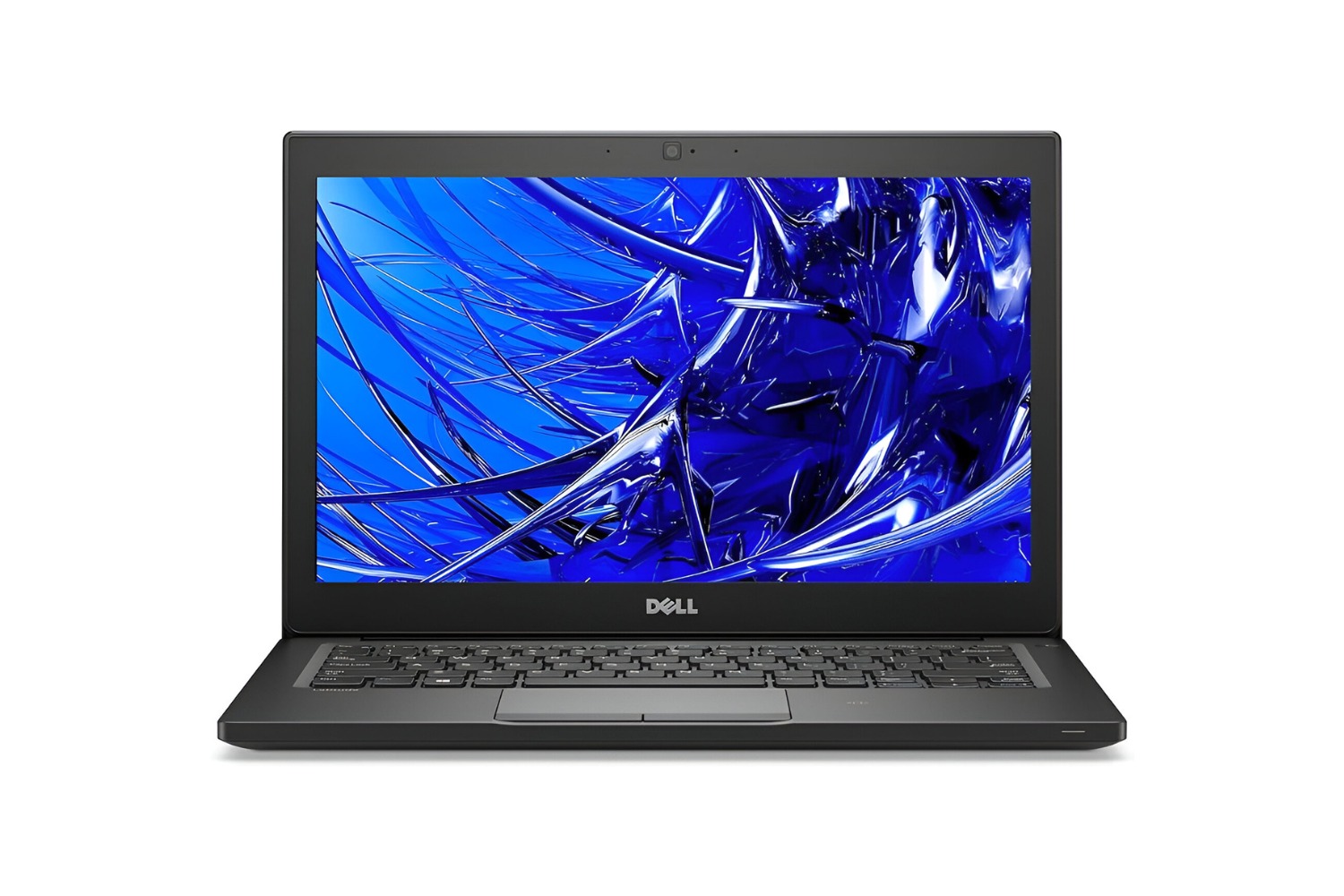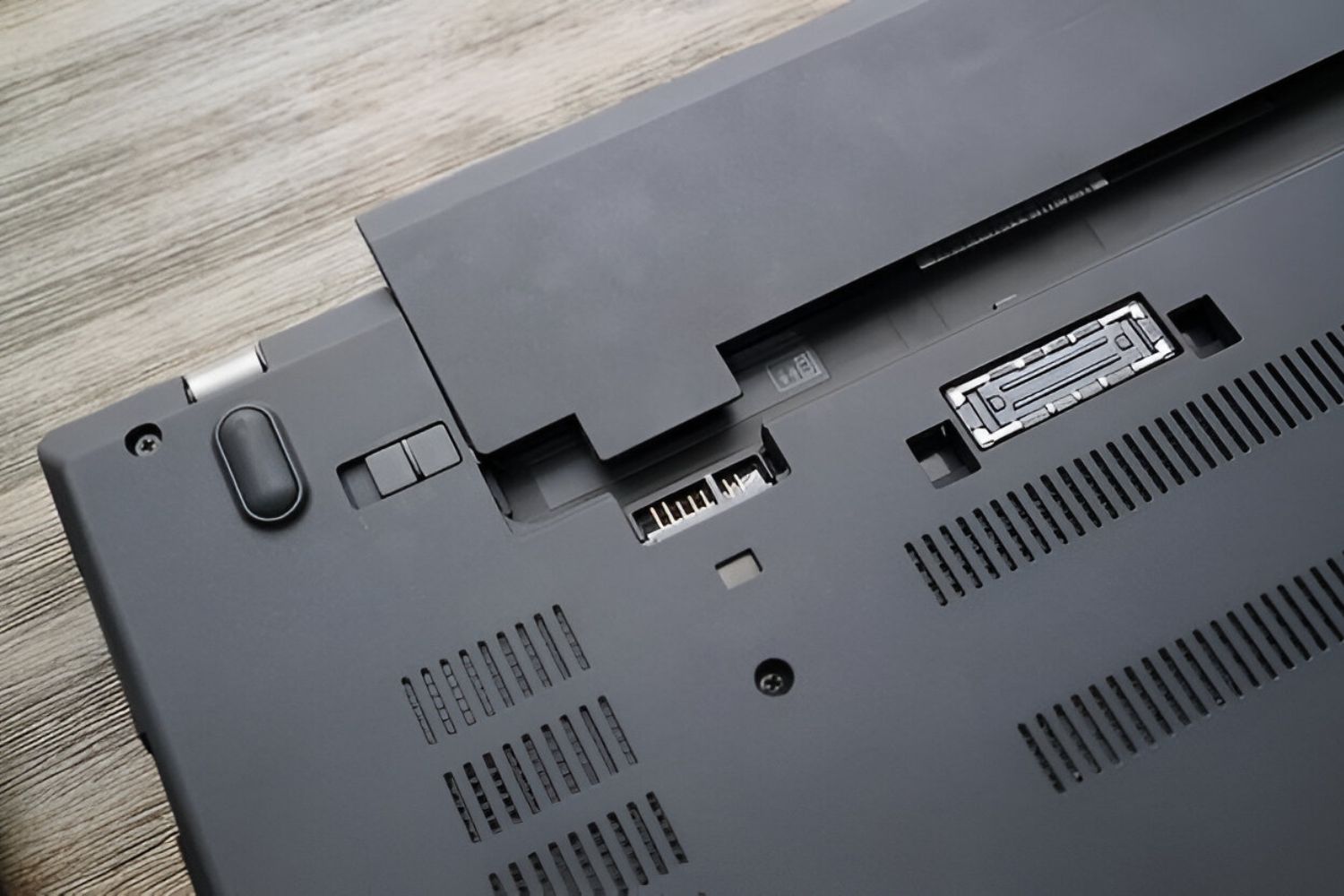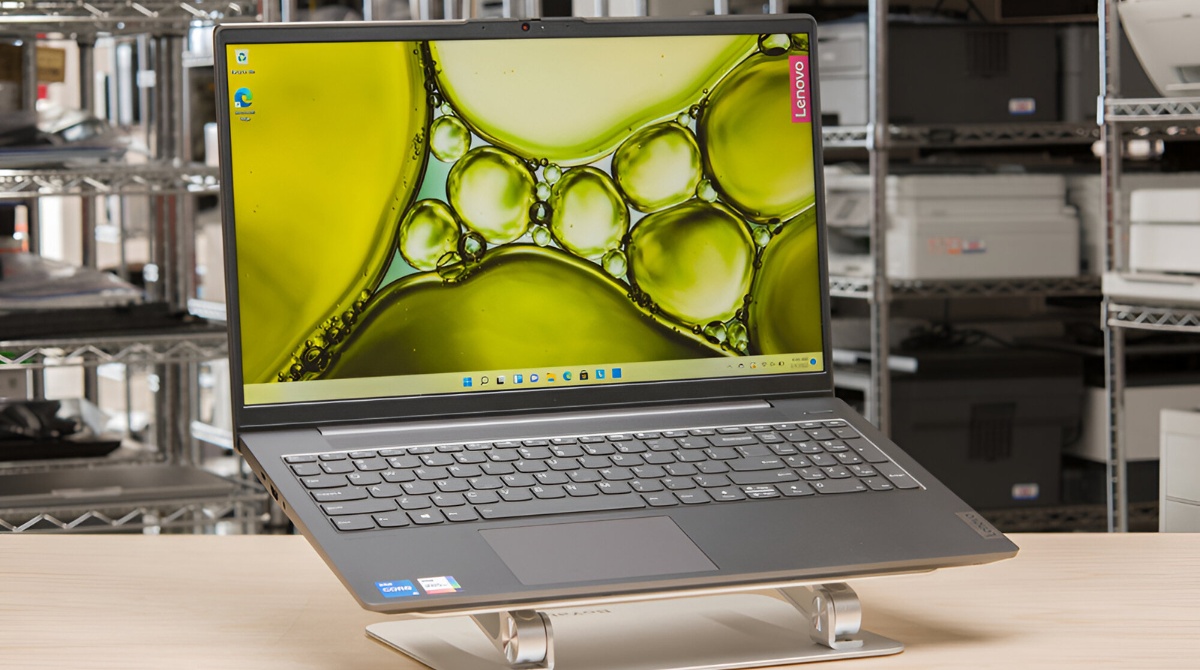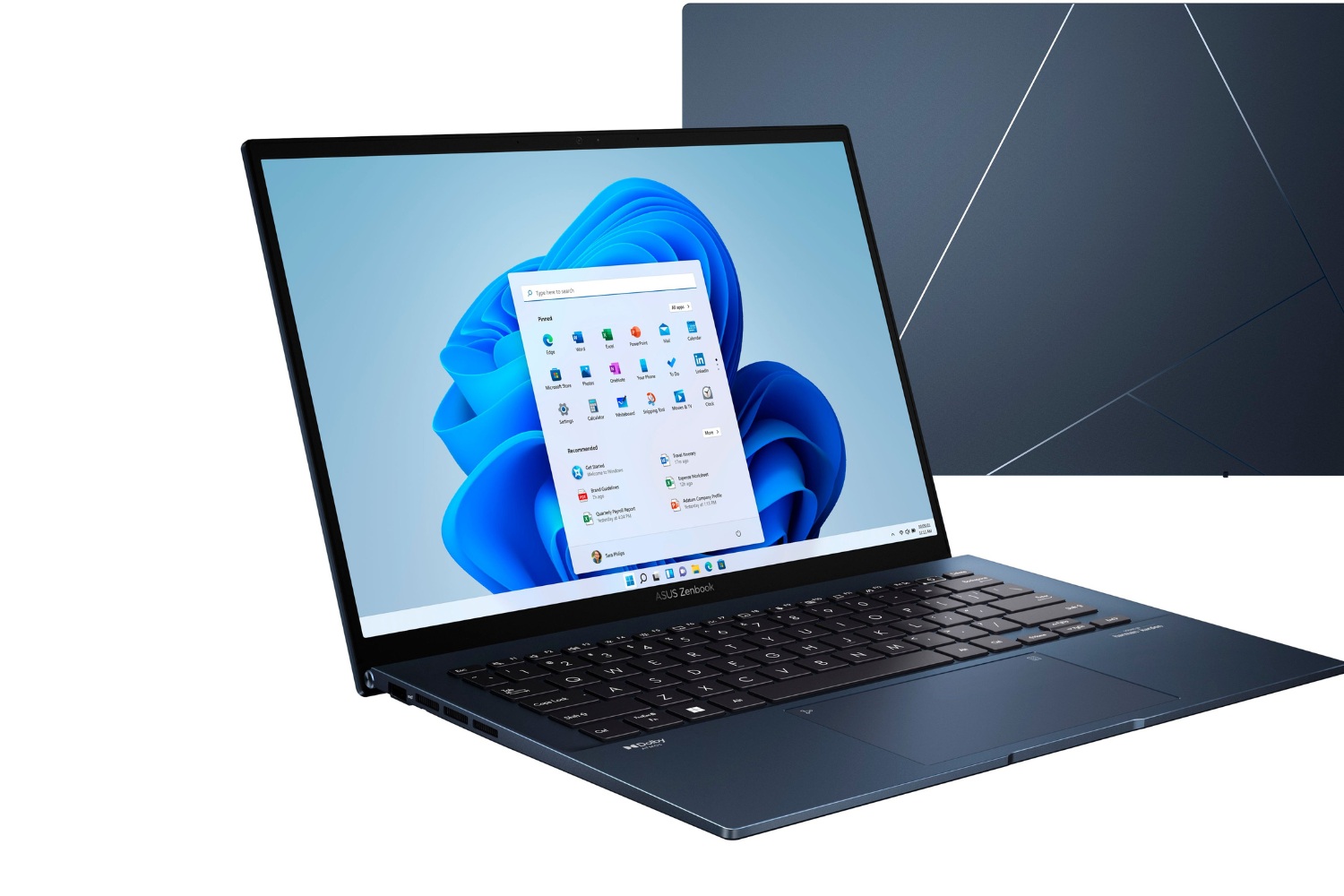Introduction
Welcome to the world of ultrabooks! These sleek and portable devices are perfect for professionals, students, and anyone on the go. One of the crucial aspects of owning an ultrabook is ensuring that its battery life is maximized. After all, nobody wants to be constantly searching for an outlet or lugging around a charger.
In this article, we will explore various tips and tricks to help you make your ultrabook battery last longer. By implementing these strategies, you can extend the battery life and enjoy uninterrupted productivity, entertainment, and browsing.
Before we dive into the details, it’s important to note that the battery life of an ultrabook depends on various factors such as the device model, battery capacity, and usage patterns. However, the tips discussed here can generally help you optimize and conserve battery power, regardless of the specific ultrabook you own.
So, whether you are a student studying at a coffee shop, a business professional attending meetings, or a frequent traveler, these tips will come in handy. Let’s get started and learn how to make your ultrabook battery last longer!
Adjust Display Settings for Power Savings
The display screen is one of the most power-hungry components of your ultrabook. By optimizing the display settings, you can significantly extend the battery life. Here’s how you can do it:
Firstly, reduce the screen brightness. Lowering the brightness level will consume less power and allow your ultrabook battery to last longer. Adjust the brightness to a level that is comfortable for you while still being energy-efficient.
Secondly, consider enabling the power-saving mode or adaptive brightness feature on your ultrabook. These options automatically adjust the screen brightness based on the ambient lighting conditions. By making use of these features, you can further enhance the efficiency of your ultrabook’s display.
Furthermore, it is advisable to set a shorter timeout period for the screen to turn off when not in use. This can be done by accessing the power settings in the control panel or system preferences of your operating system. By reducing the screen timeout, you prevent the display from consuming unnecessary power when you are not actively using your ultrabook.
Lastly, consider using dark or black wallpapers instead of brighter ones. Dark wallpapers require less energy to display, thereby reducing strain on the battery. Moreover, make sure to check for any screen savers or animations that may be running in the background and disable them if unnecessary.
By applying these simple adjustments to your display settings, you can significantly extend the battery life of your ultrabook. Remember to experiment with these settings and find the right balance between power savings and optimal visibility for your specific needs.
Disable Unnecessary Background Apps and Services
Background apps and services can unknowingly drain your ultrabook’s battery even when you’re not actively using them. Disabling unnecessary background apps and services can help conserve power and prolong your battery life. Here’s how you can do it:
Start by reviewing the apps and programs that run automatically when your ultrabook starts up. Many of these applications continue to run in the background, consuming valuable system resources and battery power. Disable or remove any apps that you don’t need or use regularly to minimize their impact on your battery life.
Next, take a look at the notifications settings on your ultrabook. Notifications from various apps and services can be useful, but too many notifications can drain your battery quickly. Consider disabling or customizing notifications to reduce their frequency and impact on battery life.
In addition, keep an eye on apps that unnecessarily synchronize data in the background. Email clients, cloud storage services, and social media apps are notorious for constantly syncing data, which can drain battery power. Adjust the syncing settings for these apps or manually update them only when necessary to conserve battery life.
Another battery-draining culprit can be unnecessary Windows services or processes. By accessing the Task Manager or System Configuration tool, you can identify and disable services that are not critical for your day-to-day usage. Exercise caution when disabling services and only disable those you are confident won’t affect the performance or functionality of your ultrabook.
Lastly, consider using a reliable task manager or system optimization tool to help you identify and close resource-intensive background apps. These tools can provide real-time insights into which apps are using significant CPU and memory resources. By closing these apps, you free up system resources and reduce battery drain.
By taking the time to disable unnecessary background apps and services, you can conserve battery power and ensure that your ultrabook lasts longer on a single charge. Be mindful of the apps that are running in the background and only keep those that are essential to your workflow or entertainment needs.
Optimize Power Settings
Optimizing the power settings on your ultrabook can have a significant impact on your battery life. By tweaking these settings, you can customize how your ultrabook utilizes power and maximize its efficiency. Here are some tips to optimize power settings:
Firstly, access the power settings on your ultrabook. Depending on your operating system, you can usually find these settings in the control panel or system preferences. Look for a power plan or power options menu that allows you to customize various power-related settings.
Consider selecting a power plan that is specifically designed for battery saving. Many operating systems offer predefined power plans that prioritize energy efficiency. These plans often reduce the speed of the processor, limit screen brightness, and adjust other power-consuming settings to extend battery life.
Furthermore, you can manually adjust advanced power settings to fine-tune power usage. Some key settings to consider modifying include the processor power management, allowing the processor to use less power when idle or under light loads. Additionally, you can adjust the hard drive and USB sleep settings to conserve power when these devices are not in use.
Another noteworthy setting to consider is the display timeout. Shortening the time it takes for the display to turn off when idle can significantly reduce power consumption. However, find a balance that suits your usage patterns, ensuring that the display doesn’t turn off too quickly and disrupt your workflow.
You may also want to disable power-hungry features such as animations and visual effects. While these features may enhance the visual appeal, they come at the cost of increased power consumption. Disabling or reducing these eye-candy settings can help conserve battery power.
Finally, don’t forget to put your ultrabook to sleep or hibernate when you’re not using it for an extended period. These modes allow your ultrabook to conserve power while still allowing you to quickly resume your work when needed. Sleep mode keeps your session in memory, while hibernate mode saves your work to the hard drive and powers off the system.
By optimizing the power settings on your ultrabook, you can effectively manage power usage and extend battery life. Experiment with these settings to find the optimal balance between performance and battery efficiency for your specific needs.
Minimize Wi-Fi and Bluetooth Usage
Wi-Fi and Bluetooth are essential for staying connected, but they can also be significant draws on your ultrabook’s battery. By minimizing their usage when not needed, you can conserve battery power and extend your ultrabook’s battery life. Here are some tips to help you achieve this:
Firstly, consider disabling Wi-Fi when you’re not actively using the internet. Keeping Wi-Fi turned on when not needed can cause your ultrabook to continuously search for and connect to networks, which consumes unnecessary power. Disable Wi-Fi through the network settings or function key on your ultrabook to conserve battery life.
Similarly, Bluetooth functionality should be disabled when not in use. Bluetooth allows for wireless connectivity with various devices, such as headphones, speakers, or mice. However, like Wi-Fi, it consumes power even when idle. Disable Bluetooth through the settings or function key on your ultrabook to conserve battery power.
Furthermore, if you’re using Wi-Fi or Bluetooth, make sure to optimize the settings for energy efficiency. For Wi-Fi, check for auto-connect options and disable them to prevent your ultrabook from automatically connecting to networks that may not be necessary. Additionally, consider disabling Wi-Fi network scanning or set it to scan less frequently to conserve battery power.
When using Bluetooth, disconnect or unpair devices when you’re done using them. Leaving Bluetooth devices connected can lead to constant communication and power drain in the background. Disconnecting or unpairing devices when not in use can help minimize Bluetooth-related power consumption.
It’s important to strike a balance between connectivity and battery life. While it may not always be practical to disable Wi-Fi or Bluetooth, being mindful of their usage and optimizing their settings can go a long way in conserving battery power.
If you do need to connect to the internet or use Bluetooth, try to limit the duration of your sessions. Disconnect from networks or turn off Bluetooth as soon as you’re finished with the task at hand to minimize power consumption.
By minimizing Wi-Fi and Bluetooth usage and optimizing their settings, you can effectively conserve battery power and maximize the battery life of your ultrabook.
Use Battery Saver Mode
Most ultrabooks come equipped with a built-in battery saver mode, specifically designed to extend battery life. Activating this mode can significantly prolong the time your ultrabook can run on a single charge. Here’s how you can utilize the battery saver mode:
Firstly, access the battery settings on your ultrabook. Look for an option to enable battery saver mode. Depending on your operating system, this option may be located in the control panel, system preferences, or the taskbar/notification area.
When activated, battery saver mode automatically adjusts various settings to reduce power consumption. These adjustments may include lowering the screen brightness, limiting background app activity, and reducing system performance. These changes help optimize power usage and extend battery life.
Keep in mind that while in battery saver mode, your ultrabook may operate with reduced performance. This is because certain high-power processes or tasks are limited to maximize battery efficiency. However, the impact on performance is usually negligible for everyday tasks such as web browsing, document editing, and media playback.
In addition to the automatic adjustments made by the battery saver mode, you may also have the option to customize its settings. For example, you may be able to specify the level of battery remaining at which the mode kicks in or adjust individual settings such as screen brightness or app notifications while in battery saver mode.
It is worth noting that activating battery saver mode doesn’t have to be an all-or-nothing approach. Some ultrabooks allow you to enable battery saver mode only when the battery reaches a certain level. This way, you can enjoy normal performance when the battery is well-charged and switch to battery saver mode when the battery is running low.
Although battery saver mode may limit some functionalities and performance, it is a valuable tool for extending battery life when you need it most. By utilizing this feature, you can make the most out of your ultrabook’s battery and keep working or enjoying your content for longer periods between charges.
Reduce Keyboard and Mouse Backlighting
Keyboard and mouse backlighting are common features found in many ultrabooks, providing a visually appealing and functional aspect. However, these backlights can consume significant amounts of battery power. By reducing the backlight intensity or disabling it altogether, you can conserve battery life. Here’s how to do it:
Firstly, check the settings for your keyboard backlight. Many ultrabooks allow you to adjust the brightness or intensity of the backlight. Lowering the brightness level or setting it to an automatic mode that adjusts based on ambient lighting can help reduce power consumption. Find the appropriate setting that offers a balance between usability and energy efficiency.
If your ultrabook has the option to disable the keyboard backlight entirely, consider doing so when you’re in a well-lit environment or when you’re comfortable typing without the backlight. Disabling the backlight can save a considerable amount of battery power.
Similarly, if your ultrabook has a backlit mouse or trackpad, check for settings that allow you to adjust or disable the backlight. Mouse or trackpad backlighting can be an unnecessary drain on your battery, especially if you don’t rely on it in your daily usage. Disabling the backlight can help extend your ultrabook’s battery life.
Some ultrabooks may have additional features such as automatic timeout for the keyboard and mouse backlighting. These features automatically turn off the backlighting after a period of inactivity to conserve battery power. Check if this option is available on your ultrabook and ensure it is enabled for optimal energy efficiency.
Remember, the keyboard and mouse backlighting are primarily cosmetic features and may not be essential for your day-to-day usage. By adjusting the settings or disabling the backlighting when not needed, you can save valuable battery power and prolong your ultrabook’s battery life.
Experiment with different brightness levels and usage scenarios to find the right balance of functionality and energy efficiency for your specific needs. By taking control of the backlighting settings, you can enjoy longer battery life without compromising on your productivity or user experience.
Keep Your Ultrabook Clean and Dust-Free
Maintaining a clean and dust-free ultrabook not only ensures optimal performance but also helps in maximizing battery life. Dust and debris can obstruct airflow, causing the cooling system to work harder and consume more power. Here are some tips to keep your ultrabook clean and dust-free:
Firstly, regularly clean the exterior of your ultrabook using a soft, lint-free cloth. Wipe away any fingerprints, smudges, or dirt that may accumulate on the surface. Keeping the exterior clean not only improves the aesthetic appeal but also prevents any buildup of debris that can eventually find its way inside the device.
Next, periodically clean the keyboard, touchpad, and other input devices. Use compressed air or a small brush to remove any dust or crumbs that may have accumulated between the keys or in the crevices. A clean keyboard and touchpad not only provide a better user experience but also prevent debris from falling into the internal components of your ultrabook.
Consider using screen protectors and keyboard covers to minimize the accumulation of dust and dirt on the display and input devices. These protective accessories can be easily cleaned or replaced, reducing the need for frequent cleaning of these components.
One area that is often overlooked is the ventilation system. Check the vents and cooling fans regularly and remove any dust or debris that may have accumulated. Clogged vents restrict airflow, leading to increased heat buildup, which in turn requires more power to cool the system. By keeping the ventilation system clean and unobstructed, you ensure efficient cooling and reduce power consumption.
If necessary, take your ultrabook to a professional for a deeper cleaning. They can disassemble the device and clean hard-to-reach areas that may accumulate dust over time. This deep cleaning can help improve the overall performance and longevity of your ultrabook.
By keeping your ultrabook clean and dust-free, you maintain optimal airflow and cooling efficiency, leading to reduced power consumption and extended battery life. Regular maintenance and cleaning not only benefit battery life but also contribute to the overall durability and reliability of your ultrabook.
Remember to follow the manufacturer’s guidelines and recommendations when cleaning your ultrabook, as different models may have specific cleaning instructions. When in doubt, consult the user manual or contact customer support for assistance.
Close Unused Browser Tabs and Applications
We often have multiple browser tabs and applications open simultaneously, unaware that they can significantly impact our ultrabook’s battery life. Keeping unnecessary tabs and applications running in the background consumes system resources and drains the battery. Here’s why you should close unused tabs and applications:
Firstly, each open tab in your web browser consumes memory and processing power. The more tabs you have open, the more strain it puts on your ultrabook’s resources. Closing unused tabs not only frees up memory but also reduces CPU usage, resulting in lower power consumption and longer battery life.
Similarly, running multiple applications simultaneously can strain your ultrabook’s resources and impact battery life. Applications running in the background often continue to consume power, even when not actively being used. Closing unused applications not only conserves system resources but also saves battery power.
An effective strategy is to utilize the “Close All” or “Close Other Tabs” options in your web browser. These options allow you to quickly close all tabs except for the one you’re currently using or close all tabs except for a selected few. By using these options, you can declutter your browser and keep only the tabs you need open.
Additionally, consider closing any unused applications running in the background. Check the system tray or task manager to identify applications that are active but not in use. Closing these unnecessary applications can free up system resources and reduce power consumption.
If you need to reference specific webpages or applications later, consider bookmarking them or adding them to your favorites list. This way, you can easily access them when needed without keeping them open and draining your battery unnecessarily.
Remember to save any important work or data before closing tabs or applications to avoid losing any unsaved changes. Additionally, be mindful of any ongoing downloads or processes that may be running in the background, and make sure to pause or complete them before closing tabs or applications.
By developing the habit of closing unused browser tabs and applications, you can optimize your ultrabook’s performance, conserve system resources, and ultimately extend the battery life. Prioritize the tabs and applications you truly need, and close the rest to maximize efficiency and minimize power consumption.
Utilize Sleep or Hibernate Mode
Sleep and hibernate modes are power-saving features available on most ultrabooks. By utilizing these modes when your ultrabook is not in use, you can conserve battery power and extend battery life. Here’s how you can make the most out of sleep and hibernate modes:
Sleep mode is a power-saving state that allows your ultrabook to quickly resume from where you left off. When you activate sleep mode, your ultrabook enters a low-power state, keeping your session and open applications in memory. This allows you to quickly wake up your ultrabook and continue working without having to wait for it to boot up. Sleep mode is ideal when you plan on returning to your ultrabook within a short period, such as during breaks or when moving between locations.
Hibernate mode, on the other hand, is a power-saving state that saves your session and open applications to the hard drive and then powers off your ultrabook. When you activate hibernate mode, your ultrabook completely shuts down, and upon waking up, it restores your previous session and open applications. Hibernate mode consumes zero power while your ultrabook is powered off, making it an excellent option when you don’t plan on using your ultrabook for an extended period, such as overnight or when traveling.
Both sleep and hibernate modes have their advantages, and it’s important to choose the appropriate mode based on your usage scenario. Generally, if you plan on returning to your ultrabook within a short duration, sleep mode is more suitable. If you anticipate not using your ultrabook for an extended period, hibernate mode offers greater power-saving benefits.
To utilize these modes, access the power settings on your ultrabook and configure the sleep and hibernate options. Adjust the settings to your preference, such as the duration of inactivity before sleep mode engages or the conditions for hibernate mode to activate. It’s also worth noting that some ultrabooks may have a hybrid sleep mode, which combines the benefits of sleep and hibernate modes. This mode saves your session to both memory and the hard drive, providing a backup in case of power loss.
Remember, before placing your ultrabook into sleep or hibernate mode, save any unsaved work and close any running applications. This ensures that your data is protected and you can quickly resume your work without any interruptions.
By utilizing sleep and hibernate modes appropriately, you can save valuable battery power and prolong the battery life of your ultrabook. Take advantage of these power-saving features to strike a balance between convenience and energy efficiency, ensuring that you can seamlessly resume your work while maximizing battery longevity.
Avoid Excessive Multitasking
In today’s fast-paced digital world, multitasking has become a common practice. However, excessive multitasking can negatively impact both productivity and battery life on your ultrabook. Here’s why it’s important to avoid excessive multitasking:
When you have multiple applications and tasks running simultaneously, your ultrabook’s processor and RAM are under constant strain. The more tasks you add, the harder your ultrabook has to work, consuming more power in the process. This increased power demand leads to faster battery drain.
Excessive multitasking not only drains your battery but also impacts your ultrabook’s overall performance. Running too many applications simultaneously can lead to lag, freezing, or slower response times. This hampers productivity and can cause frustration when trying to switch between tasks quickly.
To optimize battery life, prioritize and focus on the most important tasks. Close any unnecessary applications or browser tabs that are not actively in use. By reducing the number of active tasks, you allow your ultrabook to allocate its resources more efficiently, resulting in longer battery life and improved performance.
When you find yourself multitasking, try to group similar tasks together. For example, if you need to work on a document and browse the web for research, complete one task before moving on to the other. This allows your ultrabook to focus on one task at a time, conserving power by not constantly switching between applications.
Consider utilizing productivity tools or virtual desktops to better organize your tasks and applications. These tools allow you to create separate workspaces where you can group related tasks together. Switching between virtual desktops is more efficient than constantly switching between multiple open windows, which can drain your battery faster.
In addition to managing your applications and tasks, be mindful of resource-heavy activities. Streaming high-definition videos, running graphic-intensive games, or using software that requires significant processing power can quickly drain your battery. Whenever possible, limit these resource-intensive activities to conserve power.
By avoiding excessive multitasking and consciously managing your applications and tasks, you can significantly extend your ultrabook’s battery life. Prioritize your tasks, close unnecessary applications, and steer clear of resource-heavy activities to optimize both productivity and efficiency.
Update Software and Drivers Regularly
Regularly updating software and drivers on your ultrabook is crucial not only for security and performance reasons but also for optimizing battery life. Software updates often include bug fixes, performance enhancements, and power-saving optimizations. Keeping your software and drivers up to date ensures that your ultrabook is running efficiently and minimizing unnecessary power consumption. Here’s why you should prioritize regular software and driver updates:
Firstly, software updates often include important power-saving features and optimizations. Developers constantly work on improving software efficiency to minimize resource usage and maximize battery life. By staying up to date with the latest software releases, you can take advantage of these improvements and ensure your ultrabook is utilizing power more efficiently.
Similarly, updating device drivers, such as those for your graphics card, network adapter, or touchpad, can have a significant impact on battery life. Driver updates often include performance enhancements and bug fixes that enable better power management. By keeping your drivers up to date, you can ensure compatibility with the latest software releases and optimize power consumption.
In addition to power-saving benefits, software and driver updates also play a critical role in maintaining the security and stability of your ultrabook. Updates often include security patches that address vulnerabilities and protect your system from potential threats. This not only ensures the safety of your data but also prevents malicious processes from running unknowingly and draining your battery.
To ensure regular software and driver updates, enable automatic updates whenever possible. Most operating systems and applications offer automatic update settings, allowing you to stay current with the latest releases without manual intervention. These automatic updates can keep your ultrabook optimized, secure, and running efficiently without requiring much effort on your part.
However, it’s important to note that automatic updates may consume some battery power during the update process. If you’re concerned about battery life, you can choose to manually install updates during periods when your ultrabook is connected to a power source or when you know you won’t need to rely on battery power for an extended period.
By prioritizing regular software and driver updates, you ensure that your ultrabook is running at its best in terms of performance, security, and power efficiency. Take advantage of automatic updates when available and make it a habit to periodically check for updates manually. This proactive approach will help you maximize your ultrabook’s battery life and overall user experience.
Adjust Power Consumption of Peripherals
Peripherals such as external drives, USB devices, and accessories can contribute to significant power consumption on your ultrabook. By adjusting the power consumption of these peripherals, you can effectively conserve battery life. Here’s how you can optimize the power usage of your peripherals:
Firstly, consider unplugging or disconnecting peripherals that are not in use. Even when idle, peripherals can draw power from your ultrabook. This is especially true for devices that have LEDs or other indicators that remain active even when not actively in use. By disconnecting unused peripherals, you can minimize power drain and maximize your battery life.
When using external drives or USB devices, take advantage of power-saving features when available. Many external drives and USB devices have power management options that allow them to enter a sleep mode or power off when not in use. Activating these power-saving features helps reduce power consumption and extends battery life.
Some peripherals may have adjustable power settings that allow you to control their power consumption. For example, wireless mice often have different sensitivity settings that impact power usage. Adjusting these settings to lower power consumption can help save battery life. Consult the user manual or the manufacturer’s website for instructions on adjusting power settings for your specific peripherals.
Bluetooth devices are known for their low power consumption, but they can still contribute to battery drain if left connected when not in use. If you’re not actively using your Bluetooth-enabled peripherals, consider turning off Bluetooth on your ultrabook or disconnecting them to conserve battery power.
Monitor power-hungry peripherals that may remain active in the background. For example, some printers or scanners continue to consume power even when not actively printing or scanning. Consider powering these devices off or unplugging them when not in use to save power.
Avoid using unnecessary accessories or peripherals that may consume additional power. For example, if your ultrabook has a built-in webcam, consider disabling external webcams or covers that may have indicators or LEDs that remain active. Choose peripherals that are essential to your workflow and only use accessories that provide tangible benefits without draining your battery unnecessarily.
By adjusting the power consumption of your peripherals, you can reduce unnecessary power drain and extend the battery life of your ultrabook. Be mindful of the peripherals connected to your ultrabook and configure their settings, disconnect them when not in use, or opt for power-efficient alternatives. These small adjustments can make a notable difference in preserving battery power and ensuring optimal performance.
Enable Battery Health Settings
To ensure the longevity and optimal performance of your ultrabook’s battery, it’s essential to enable and utilize battery health settings. These settings are designed to monitor and manage battery usage, protecting against physical degradation and extending the overall lifespan of your battery. Here’s why you should enable and take advantage of battery health settings:
Firstly, battery health settings provide insights into your battery’s current condition and usage patterns. They may display information such as the battery’s maximum capacity, current charge level, and overall health. By regularly monitoring this information, you can observe any significant changes or potential issues with your battery.
In addition to monitoring, battery health settings often offer features that help optimize charging and usage. For example, some ultrabooks have an adaptive charging option that intelligently controls the charging process to prevent overcharging, which can degrade battery health over time. Enabling this feature can help preserve the overall lifespan and capacity of your battery.
Another common battery health setting is the battery calibration feature. This feature allows your ultrabook to accurately measure and report the battery’s actual capacity and performance. By calibrating your battery regularly, you ensure that the reported battery percentages are more accurate and that your ultrabook is making informed decisions regarding power management.
Utilizing battery health settings may also include configuring battery conservation mode. This mode limits the maximum charge level to a certain percentage, typically around 80%, to prolong the overall lifespan of the battery. While this may reduce the run-time on a single charge, it helps minimize the wear and tear on the battery, resulting in a longer overall lifespan.
Enabling battery health settings can help prevent issues such as unexpected shutdowns, shorter battery life, and decreased performance. It allows you to take proactive measures to protect and maintain the health of your ultrabook’s battery.
It’s important to note that battery health settings vary depending on the make and model of your ultrabook. The specific options and features available may differ, so consult the user manual or the manufacturer’s website for instructions relevant to your device.
By enabling and making use of battery health settings, you can actively monitor and manage the health of your ultrabook’s battery. Through optimized charging and usage, you can extend the lifespan of your battery, maintain its performance, and ensure that your ultrabook continues to operate at its best for years to come.
Manage Notifications and Background Syncing
Notifications and background syncing are useful features that keep you updated and connected, but they can also contribute to excessive power consumption on your ultrabook. By managing these features effectively, you can conserve battery power and improve overall efficiency. Here’s how to manage notifications and background syncing:
Firstly, review your notification settings and customize them to minimize interruptions and unnecessary power drain. Disable or limit notifications from apps or services that are not essential or that you don’t need to receive real-time updates from. By reducing the number of notifications, you reduce the frequency of your ultrabook’s screen lighting up, which can conserve battery power.
Additionally, consider disabling visual and audible notifications for apps that are not critical. Instead, opt for more discreet notification methods such as badges or silent notifications to lower power consumption. Only enable visual or audible notifications for the apps or services that require immediate attention.
Review and manage background sync settings for various apps and services on your ultrabook. Background syncing ensures that your data, such as emails, calendar events, and social media updates, are up to date even when you’re not actively using the app. However, constant background syncing can drain your battery. Adjust the syncing frequency or manually sync when needed to strike a balance between staying connected and conserving energy.
Consider consolidating notifications and using notification management apps or built-in system features to group and organize them. This way, you can minimize the number of times your ultrabook’s display wakes up for notifications, reducing power consumption.
Some operating systems offer a “Do Not Disturb” or “Quiet Hours” mode, which temporarily disables or limits notifications during specific times or events. Enable these modes when you’re not able to attend to notifications, such as during meetings or when you’re trying to conserve battery power. This way, you can stay undisturbed and prolong your ultrabook’s battery life.
Regularly review the apps and services that have permission to run in the background. Some apps may use power even when not actively in use. Disable or restrict background activity for apps that you don’t need to run in the background continuously. This way, you can prevent unnecessary power drain from these apps.
Remember to fine-tune your notification and background sync settings based on your preferences and needs. Experiment with different configurations to strike the right balance between staying connected and optimizing battery life on your ultrabook.
By effectively managing notifications and background syncing, you can reduce unnecessary power drain and maximize the battery life of your ultrabook. Take control of the apps and services that have permission to send notifications or run in the background, and customize these settings to suit your requirements and conserve battery power.
Dim Your Screen Brightness
The display screen is one of the most power-hungry components of your ultrabook. By dimming the screen brightness, you can significantly reduce power consumption and extend your battery life. Here’s why you should consider adjusting your screen brightness:
Firstly, reducing the screen brightness is a simple yet effective way to conserve battery power. The brighter the screen, the more power it requires. By dimming the screen brightness to a comfortable level, you can significantly extend the battery life of your ultrabook.
Most ultrabooks have dedicated function keys or keyboard shortcuts to adjust the screen brightness. Experiment with different brightness levels to find the lowest level that still allows you to see the display clearly without straining your eyes. This way, you can strike a balance between visibility and energy efficiency.
Consider enabling the auto-brightness feature if your ultrabook has it. Auto-brightness adjusts the screen brightness based on ambient lighting conditions, ensuring that the display is neither too bright nor too dim. This feature can help optimize power usage by automatically adapting to different lighting environments.
Remember to manually adjust the screen brightness when needed, especially in situations where auto-brightness may not be accurate. For example, if you’re using your ultrabook in a well-lit area, you may need to decrease the screen brightness even further to save power.
Dimming your screen brightness not only helps conserve battery power but also has added benefits such as reducing eye strain and improving visual comfort, especially during prolonged periods of use.
It’s worth noting that some applications or software may have their own brightness settings. Take the time to adjust the brightness settings within these applications as well. For example, video playback or photo editing software often have their own brightness controls. Lowering the brightness within these applications can further reduce power consumption without compromising the visual quality of the content.
Lastly, remember to adjust the screen timeout settings in your power management options. This determines how long the display remains on when idle. Setting a shorter timeout period ensures that the screen is turned off promptly when not in use, reducing unnecessary power consumption.
By dimming your screen brightness, you can make a significant impact on your ultrabook’s battery life. Get in the habit of adjusting the brightness level depending on your environment and preferences. This simple adjustment can go a long way in saving energy and prolonging the time your ultrabook operates on a single charge.
Close Resource-Heavy Applications
Resource-heavy applications can strain your ultrabook’s CPU, GPU, and memory, resulting in increased power consumption and decreased battery life. Closing these applications when not in use is an effective way to conserve battery power. Here’s why you should prioritize closing resource-heavy applications:
Firstly, resource-heavy applications, such as video editing software, graphic-intensive games, or virtualization tools, require a significant amount of processing power and memory to run. These applications can consume a large portion of your ultrabook’s resources, leading to increased power usage and faster battery drain. Closing these applications when not actively using them can free up resources and reduce power consumption.
Check the taskbar or system tray for applications running in the background that may be resource-intensive. Some apps may continue to consume power even if they are minimized or hidden. Identify these applications and consider closing them when they are not needed to save power.
Web browsers, especially those with multiple tabs or running heavy plugins, can also be resource-intensive and drain your battery quickly. Close any unused browser tabs, especially those playing videos or running scripts, as these can use significant CPU power. Streamline your browsing experience by keeping only the tabs you actively need open, thereby reducing power consumption and boosting battery life.
Consider using task manager or activity monitor tools to identify processes or applications that are using excessive system resources. Sort the processes by CPU or memory usage and monitor which applications are particularly resource-heavy. By closing these applications when not needed, you can significantly reduce power consumption and extend battery life.
It’s important to note that closing resource-heavy applications not only helps conserve battery power but also improves overall system performance. By freeing up system resources, you enhance the responsiveness and efficiency of your ultrabook, allowing it to run smoother and faster.
If you need to switch between resource-heavy applications frequently, consider utilizing virtual desktops or task switching shortcuts to minimize the number of applications running simultaneously. This way, you can focus on one resource-intensive task at a time, maximizing both productivity and battery life.
By developing the habit of closing resource-heavy applications when not in use, you can optimize your ultrabook’s performance, conserve battery power, and ensure a smooth and efficient user experience. Be mindful of the applications you have open and close those that are not essential to your immediate tasks to maximize battery life.
Conclusion
Maximizing the battery life of your ultrabook is essential for uninterrupted productivity, entertainment, and flexibility on the go. By implementing the tips and strategies discussed in this article, you can effectively extend battery life and optimize power usage. Let’s recap the key points:
1. Adjust display settings for power savings by reducing screen brightness, enabling power-saving modes, and setting shorter screen timeout periods.
2. Disable unnecessary background apps and services to minimize power consumption and free up system resources.
3. Optimize power settings by selecting battery-saving power plans, adjusting advanced power settings, and disabling power-hungry features.
4. Minimize Wi-Fi and Bluetooth usage by disabling them when not needed and optimizing their settings for energy efficiency.
5. Make use of the battery saver mode provided by your ultrabook to automatically adjust settings and maximize battery life.
6. Reduce keyboard and mouse backlighting to conserve power without compromising usability.
7. Keep your ultrabook clean and dust-free to ensure efficient cooling and prevent power drain caused by obstructed airflow.
8. Close unused browser tabs and applications to minimize CPU usage and free up memory.
9. Utilize sleep or hibernate mode when your ultrabook is not in use to save power and quickly resume your work.
10. Update software and drivers regularly to take advantage of power-saving optimizations and ensure optimal performance.
11. Adjust the power consumption of peripherals by disconnecting unused devices, utilizing power-saving options, and disabling unnecessary accessories.
12. Enable and utilize battery health settings to monitor battery condition, optimize charging, and maximize battery lifespan.
13. Manage notifications and background syncing to reduce interruptions and power drain caused by unnecessary app activity.
14. Dim your screen brightness to lower power consumption and improve visual comfort.
15. Close resource-heavy applications to free up system resources, enhance performance, and prolong battery life.
By incorporating these strategies into your daily usage, you can effectively extend the battery life of your ultrabook and make the most out of every charge. Remember to find a balance between power conservation and your specific usage needs to ensure a seamless and enjoyable experience with your ultrabook wherever you go.







